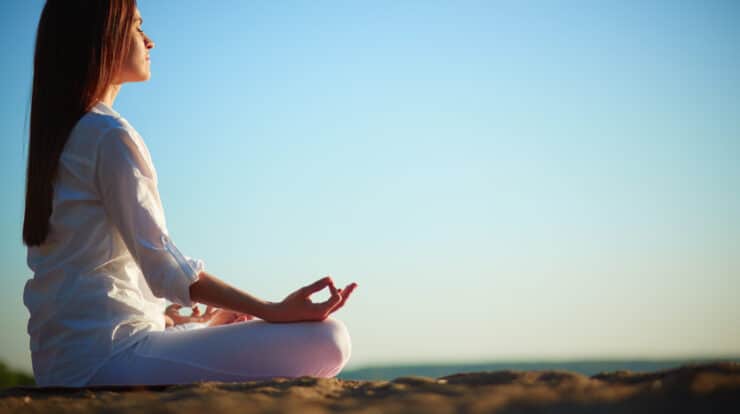
Mindfulness is a practice that involves being fully present and engaged in the current moment without judgment or distraction. It requires paying attention to ones thoughts, feelings,and surroundings while accepting them for what they are. With an increasing demand from individuals seeking ways of reducing stress levels improving mental health statuses as well as enhancing overall wellbeing; mindfulness has become popular over time. If you’re new to this concept then here’s everything necessary for getting started with ease!
Mindfulness – What It Is
Mindfulness is often defined as “paying attention on purpose.” It entails bringing your full awareness to whatever activity you’re engaged in – whether it be eating breakfast or walking down the street. The objective of mindfulness isn’t about controlling thoughts and emotions but rather observing them with curiosity and compassion. By practicing this technique regularly, individuals can develop greater self-awareness, improved focus levels while also becoming more resilient when faced with challenges. So why not give it a try? Start small by setting aside just five minutes each day for some quiet reflection time – who knows what benefits might arise from such simple actions!
Mindfulness – The Benefits of Practicing
Mindfulness practice offers numerous advantages such as:
Reduced stress and anxiety
Improved Mood and Outlook
Improved emotional regulation
Improved cognitive function and memory
Improved sleep quality
Mindfulness Practice – Starting Out
Beginning a mindfulness practice may seem overwhelming initially but it doesn’t have to be complex. Here are some tips for commencing:
To incorporate mindfulness into your daily routine set aside a specific time each day for practice. This could be as short as five minutes or extended up to an hour depending on what works best for you personally. By doing so regularly overtime it will become second nature and improve overall wellbeing significantly.
To ensure maximum productivity during your study session, its essential to find a quiet spot where you won’t be interrupted. Turn off any electronics or other distractions that may hinder your focus and concentration levels. This will help create an environment conducive for learning and retention of information. Remember: peaceful surroundings = better results!

To achieve optimal comfort during meditation, it is essential to maintain a straight back and keep your feet on the ground. If necessary use cushions or pillows for additional support. By doing so you’ll be able to focus more fully on your practice without distractions from physical discomfort.
To achieve a sense of calm and focus, close your eyes (or leave them open) and take several deep breaths. This exercise will help you center yourself in no time at all.
To achieve a state of mindfulness through breathing exercises, it is essential to focus on your inhalation and exhalation while maintaining natural rhythm. When distracted thoughts arise gently redirect them back towards the present moment by refocusing on each breath cycle. This technique can help improve mental clarity and overall wellbe being over time with consistent practice.
Mindfulness – Debunking The Myths
Mindfulness is often misunderstood as a practice that requires emptying ones mind completely. However this belief couldn’t be further from the truth – our brains are designed to think and create! Instead of trying to suppress thoughts or emotions during meditation sessions, practicing mindfulness involves observing them without judgment. It should also be noted that while some people associate mindfulness with spirituality or religion there exists an equally valid secular approach for those who prefer not to incorporate religious elements into their daily lives. Ultimately both approaches share common goals: improving mental clarity and reducing stress levels through regular practice.
How to Stay Present in Your Daily Life
Mindfulness can be practiced beyond formal practices like meditation. Here are some tips on how to incorporate it into your daily routine:
To maintain optimal productivity throughout the day it is essential to take breaks and assess your physical and emotional state. By doing so regularly you can ensure that you are operating at peak performance levels while avoiding burnout or stress.
To stay present in the moment try incorporating sensory experiences like taking a shower or washing dishes mindfully. These activities can help ground you and keep your focus on whats happening right now.
To achieve success in your endeavors, prioritize one task at a time instead of attempting to juggle multiple responsibilities simultaneously. This approach will help you stay focused and accomplish more effectively.
To cultivate gratitude, make it a habit to recognize and appreciate the good things that happen in your daily life. This simple act can have profound effects on both your mood and overall wellbeing.
Mindfulness – Resources and Suggestions
Mindfulness is a practice that can be developed further through various resources available today. Some recommended books include “Full Catastrophe Living” by Jon Kabat Zinn and “The Power of Now” by Eckhart Tolle which offer valuable insights into this subject matter. Additionally there are numerous apps like Headspace, Calm or Insight Timer designed specifically for practicing mindfulness exercises regularly at home while connecting with others who share similar interests in local groups/classes could also prove beneficial towards personal growth within the field of mindfulness practices. By utilizing these tools effectively one may experience greater mental clarity leading to an overall sense of well being over time.




